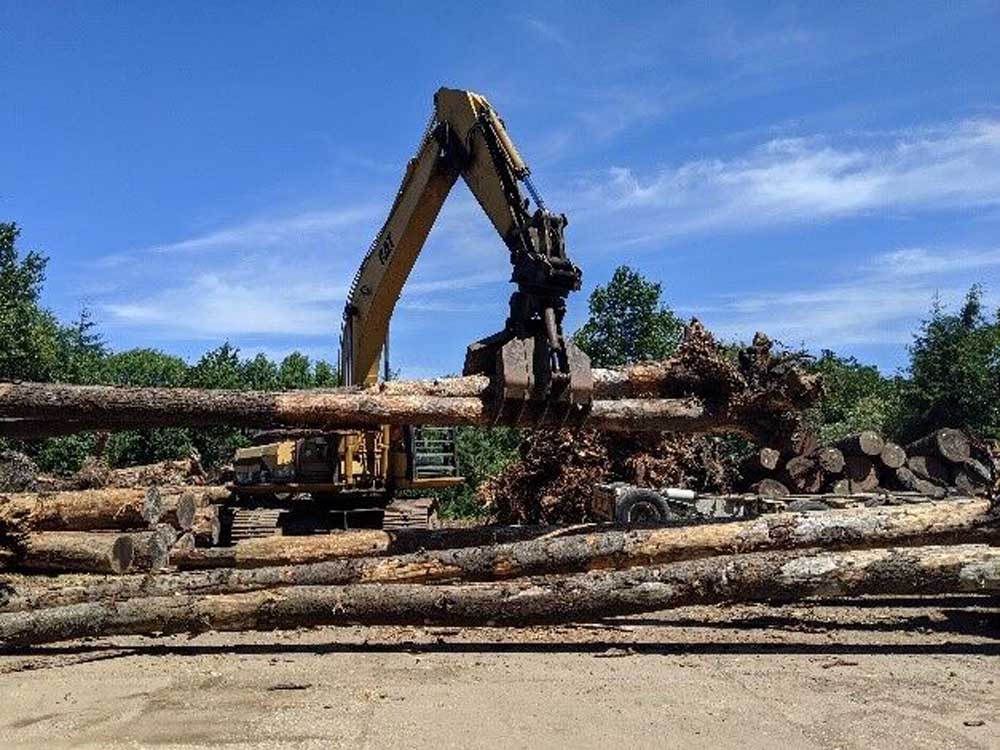The Instream Wood Bank Network: Building Habitat for Salmon and Steelhead in Southwest Washington
Published 7:27 am Wednesday, June 21, 2023

- big-machinery.jpg
Shiloh Halsey, Director of Programs, Cascade Forest Conservancy
Trending
shiloh@cascadeforest.org
The Instream Wood Bank Network is an initiative of the Cascade Forest Conservancy focused on sourcing wood materials for instream restoration and contributing to the recovery of salmon and steelhead populations across the region. It is a collaborative solution connecting landowners, timber resources, and restoration partners.
A photo of a stream with wood and branches piled across it to create habitat pools. A man stands on the right side of the photo pointing down at the the stream.
Trending
Figure 1. Instream wood making habitat pools for fish (Photo: Shiloh Halsey)
The need for large-scale fish habitat restoration is urgent. Fallen trees, hazard trees, and logs on timberlands that cannot be sold for lumber are all abundant, yet there has never been an efficient system to connect these unused wood resources with the critical need for aquatic restoration. This is where the Instream Wood Bank Network comes in.
Our network operates by sourcing wood from landowners, large and small, in southwest Washington. We work closely with haulers and handle all log transport logistics and costs. We also establish and manage a series of ‘wood banks’ where we store the collected wood until it is ready to be utilized in aquatic restoration projects. In other cases, we can bring wood materials right to restoration sites.
We invite small forest landowners to play a vital role in this conservation effort. If you have logs that meet the criteria for instream pieces, we encourage you to sell or donate them to the Wood Bank (sale or donation details will depend on the size, type, and amount). Donated logs can be tax-deductible, and you can take pride in participating in a region-wide endeavor to recover our iconic salmon and steelhead species.
For instream work, we prioritize conifers that are at least 15 inches in diameter at breast height and a minimum of 30 feet long. Logs between 40 and 50 feet in length are preferred but not required. Logs with rootwads attached are beneficial for fish habitat, but this is not a requirement. As a general guideline, we typically need at least a truckload worth of logs to arrange pickup and haulage.
A piece of big machinery picking up two long logs off of a pile of logs.
Figure 2. A contractor sorting wood bank logs (Photo: Shiloh Halsey)
Furthermore, if you, as a landowner, have instream restoration needs on your own property, we are more than willing to discuss opportunities to advance restoration efforts using wood already present on your land. This provides a fantastic chance to enhance the habitat within your property while contributing to the broader restoration goals of our region.
The Instream Wood Bank Network offers an exciting opportunity to improve habitat conditions in creeks and rivers by matching available wood with instream habitat needs. Through this work, we can make a significant impact on the recovery of our cherished salmon and steelhead populations.
For more information on the Instream Wood Bank Network or to get involved, visit www.instreamwoodbanknetwork.com. Together, let’s build a thriving future for our fish and the vibrant ecosystems on which they depend.
How does instream wood help salmon? The anadromous life histories of salmon and steelhead make them particularly vulnerable to losses of habitat connectivity, a critical consideration in light of climate change. Strategic wood placement creates new habitats within a channel and serves as structure to slow peak flows and move water out of incised channels. This re-engages floodplains and side-channels and creates pools and refugia for a variety of organisms. Instream restoration can also help reduce water temperature, as water is redirected from simplified channels into floodplains and vegetated riparian areas that provide more shade. The pooling of water also helps reduce temperatures by increasing groundwater exchange. By slowing and diverting water flow, some streams and pools can persist later into the warm, dry season—providing refuge habitat for aquatic organisms and water resources for terrestrial species. While climate change threatens aquatic systems in multiple ways, instream wood is able to respond in-kind.









